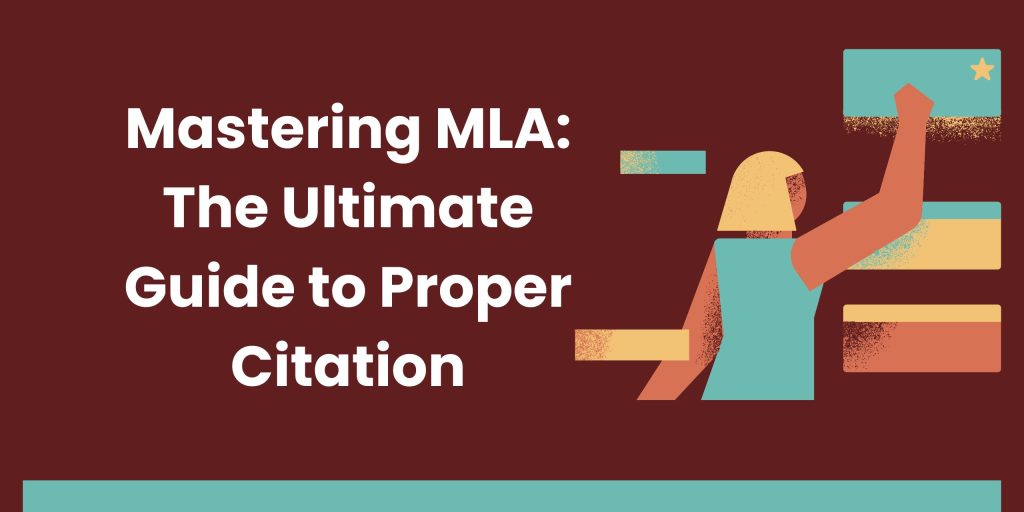Introduction:
Mastering the Modern Language Association (MLA) citation style is essential for academic writing in the humanities and liberal arts disciplines. Whether you’re a student writing a research paper, essay, or thesis, understanding MLA citation guidelines is crucial for properly attributing sources and avoiding plagiarism. In this comprehensive guide, we’ll delve into the intricacies of MLA citation, covering everything from basic formatting rules to citing various sources, both in-text and in the works cited page. By mastering MLA citation, students can enhance the clarity, credibility, and professionalism of their academic writing.
- Understanding MLA Style:
The MLA citation style is widely used in the humanities, including literature, languages, cultural studies, and philosophy. MLA style emphasizes concise parenthetical citations within the text and a detailed works cited list at the end of the document. Key features of MLA style include:
- Author-page citation format: In-text citations include the author’s last name and the page number(s) of the cited source, enclosed in parentheses.
- Works cited page: A separate page listing all sources cited in the text, arranged alphabetically by the author’s last name.
- Consistent formatting: MLA style requires consistency in formatting, including font size, margins, spacing, and indentation.
- Basic Formatting Guidelines:
Before diving into specific citation examples, it’s essential to understand the basic formatting guidelines for MLA style:
- Font and spacing: Use a legible font such as Times New Roman, size 12, and double-space the entire document.
- Margins: Set one-inch margins on all sides of the page.
- Indentation: Indent the first line of each paragraph by half an inch (or five spaces).
- Title and heading: Include a centered title on the first page of your document, followed by your name, instructor’s name, course title, and date, each on a separate line and double-spaced.
- Page numbers: Number all pages consecutively in the upper right corner, one-half inch from the top and flush with the right margin.
- Citing Books:
When citing a book in MLA style, include the following elements:
- Author’s last name, first name.
- Title of the book.
- Publisher, publication year.
- Medium of publication (e.g., print, ebook).
Example:
Smith, John. The Art of Writing: A Comprehensive Guide. Penguin Books, 2021. Print.
- Citing Articles:
For articles in journals, magazines, or newspapers, use the following format:
- Author’s last name, first name.
- “Title of the article.”
- Title of the periodical.
- Volume and issue number (if applicable), publication date, page numbers.
- Medium of publication (e.g., print, online).
Example:
Jones, Sarah. “The Impact of Climate Change on Biodiversity.” Environmental Science Quarterly, vol. 25, no. 3, 2020, pp. 45-60. Print.
- Citing Websites:
When citing websites or online sources, include the following elements:
- Author (if available).
- “Title of the webpage or article.”
- Title of the website.
- Publisher or sponsor of the website (if available), publication date (if available), URL.
Example:
Smith, David. “The History of Photography.” National Geographic, 10 June 2020, www.nationalgeographic.com/history-of-photography.
- In-Text Citations:
In-text citations in MLA style follow the author-page format, where the author’s last name and the page number(s) of the cited source are enclosed in parentheses at the end of the sentence.
- Example: (Smith 45)
- Works Cited Page:
The works cited page provides detailed information about each source cited in the text and follows specific formatting guidelines:
- Arrange entries alphabetically by the author’s last name.
- Use a hanging indent for each entry (i.e., the first line is flush left, and subsequent lines are indented).
- Include all necessary elements, such as author, title, publication date, and medium of publication.
Example:
Smith, John. The Art of Writing: A Comprehensive Guide. Penguin Books, 2021. Print.
Jones, Sarah. “The Impact of Climate Change on Biodiversity.” Environmental Science Quarterly, vol. 25, no. 3, 2020, pp. 45-60. Print.
Smith, David. “The History of Photography.” National Geographic, 10 June 2020, www.nationalgeographic.com/history-of-photography.
- Tips for Proper Citation:
- Always cite sources when directly quoting, paraphrasing, or summarizing someone else’s ideas or work.
- Be consistent in formatting and follow MLA style guidelines meticulously.
- Use credible and authoritative sources for your research to maintain the integrity of your work.
- Proofread your citations carefully to ensure accuracy and completeness.
Conclusion:
Mastering MLA citation is essential for academic writing in the humanities and liberal arts disciplines. By understanding the principles of MLA style, adhering to formatting guidelines, and properly attributing sources, students can enhance the clarity, credibility, and professionalism of their academic writing. Remember to consult the latest edition of the MLA Handbook for Writers of Research Papers for comprehensive guidance and examples. With practice and attention to detail, students can become proficient in MLA citation and excel in their academic endeavors.
